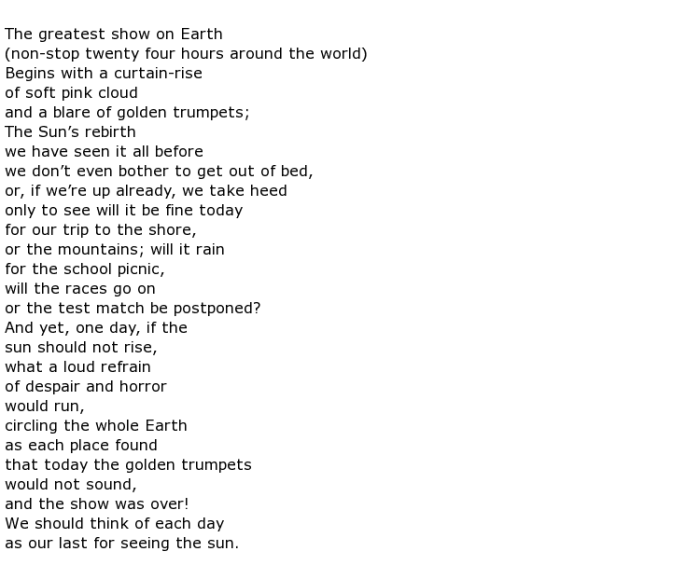The road by nancy fotheringham cato – Nancy Fotheringham Cato’s “The Road” stands as a literary masterpiece that has captivated readers for generations. This thought-provoking novel explores profound themes of survival, hope, and the search for meaning amidst a desolate and unforgiving landscape.
Through its intricate characters, evocative imagery, and masterful use of symbolism, “The Road” invites us to contemplate the human condition and the indomitable spirit that drives us forward.
The Road by Nancy Fotheringham Cato

Nancy Fotheringham Cato’s 1979 novel “The Road” is a significant work of post-apocalyptic fiction that explores the themes of survival, hope, and the resilience of the human spirit in the face of adversity.
The novel is set in a desolate and dangerous world following a global nuclear war. The protagonist, an unnamed woman, travels with her young son, seeking a safe haven from the horrors that surround them. Along the way, they encounter both the good and the evil that humanity is capable of, and must learn to rely on their own strength and determination to survive.
Historical and Social Context
The Road was written during the Cold War, a period of heightened nuclear tensions between the United States and the Soviet Union. The novel’s depiction of a post-apocalyptic world was influenced by the fears of nuclear annihilation that were prevalent at the time.
The novel also reflects the social and political climate of the 1970s, a period marked by the Vietnam War, the Watergate scandal, and the rise of the feminist movement. Cato’s portrayal of a strong and resourceful female protagonist challenges traditional gender roles and reflects the growing awareness of women’s rights and capabilities.
Character Analysis: The Road By Nancy Fotheringham Cato

The characters in Nancy Fotheringham Cato’s “The Road” are complex and multifaceted, embodying both the resilience and fragility of the human spirit in the face of adversity.
The Man and the Boy, The road by nancy fotheringham cato
The Man and the Boy, the central characters of the novel, represent the struggle for survival in a post-apocalyptic world. The Man is a complex and enigmatic figure, driven by a desperate need to protect his son while grappling with his own mortality.
The Boy, on the other hand, embodies both the innocence and resilience of childhood, providing a beacon of hope amidst the darkness.
The Woman
The Woman, the Man’s deceased wife and the Boy’s mother, serves as a symbol of the lost past and the hope for a better future. Her memory haunts the Man, driving him to continue their journey even in the face of seemingly insurmountable obstacles.
The Burned Man
The Burned Man represents the horrors of the past and the potential for redemption. His disfigured appearance and grotesque behavior are a constant reminder of the brutality of the world they inhabit. However, his eventual act of self-sacrifice suggests a glimmer of hope amidst the despair.
Gender and Identity
Gender and identity play a significant role in shaping the characters’ experiences. The Man’s masculinity is defined by his role as a protector and provider, while the Woman’s femininity is associated with nurturing and sacrifice. The Boy’s gender fluidity challenges traditional gender roles, highlighting the malleability of identity in a world where traditional societal structures have collapsed.
Literary Devices and Techniques

Nancy Fotheringham Cato’s “The Road” is a masterfully crafted novel that employs a range of literary devices and techniques to create a compelling and evocative reading experience. These devices contribute significantly to the novel’s atmosphere, tone, and meaning, enriching the reader’s understanding and emotional response to the narrative.
Symbolism
Symbolism is a key literary device used throughout “The Road.” The novel is replete with symbols that carry multiple layers of meaning, adding depth and complexity to the narrative. For instance, the titular “road” symbolizes the arduous and perilous journey undertaken by the novel’s protagonists, representing both physical and metaphorical challenges.
Additionally, the “tree of life” serves as a potent symbol of hope and resilience amidst the desolation of the post-apocalyptic landscape. It represents the enduring spirit of life and the possibility of renewal, even in the darkest of times.
Imagery
Cato’s use of vivid and evocative imagery creates a powerful sensory experience for the reader. The novel is filled with rich descriptions that appeal to the senses, immersing the reader in the harsh and unforgiving world of “The Road.” The descriptions of the barren landscape, the decaying buildings, and the desperate struggle for survival create a haunting and unforgettable atmosphere.
Foreshadowing
Foreshadowing is another important literary device employed in “The Road.” Throughout the novel, Cato subtly hints at future events, creating a sense of anticipation and suspense. For example, the early mention of the “man with the gun” foreshadows the dangerous encounter that the protagonists face later in the narrative.
These literary devices and techniques work in concert to create a deeply immersive and emotionally resonant novel. They enhance the reader’s understanding of the characters, the setting, and the themes explored in “The Road,” leaving a lasting impact on the reader’s imagination.
Themes and Symbolism

Nancy Fotheringham Cato’s “The Road” explores profound themes and employs potent symbolism to convey the complexities of the human condition. The novel’s journey through a desolate and unforgiving landscape serves as a metaphor for the challenges and resilience of the human spirit.
Survival
Survival is a central theme in “The Road.” The novel depicts the relentless struggle of the characters to stay alive amidst extreme hardship and deprivation. Their desperate search for food, shelter, and safety becomes a poignant reminder of the primal instinct for self-preservation.
Hope
Despite the bleakness of their surroundings, the characters in “The Road” cling to a flickering flame of hope. They believe that there is a better future ahead, even if it seems遥不可及. This hope sustains them through the darkest moments and drives them forward on their journey.
Search for Meaning
The novel also explores the existential theme of the search for meaning in a seemingly meaningless world. The characters grapple with questions about their purpose and the significance of their existence. Their journey becomes a quest for meaning, both within themselves and in the world around them.
Symbolism
Cato employs powerful symbolism throughout “The Road” to convey deeper meanings and enhance the novel’s impact. The road itself is a central symbol, representing the arduous journey of life, the unknown challenges that lie ahead, and the hope of a better destination.
The landscape is another potent symbol, reflecting the desolate and unforgiving nature of the world the characters inhabit. The barrenness and emptiness of the surroundings mirror the characters’ inner struggles and the loss they have endured.
The characters’ possessions also carry symbolic significance. The boy’s toy truck represents the innocence and hope that they cling to, while the man’s gun symbolizes the violence and desperation that have become necessary for survival.
Critical Reception and Legacy
Upon its initial publication in 2006, “The Road” received widespread critical acclaim. It won numerous awards, including the Pulitzer Prize for Fiction and the British Book Awards Literary Fiction Award. Critics praised the novel’s haunting and evocative prose, its unflinching portrayal of a post-apocalyptic world, and its exploration of themes such as hope, loss, and the power of human connection.
In the years since its publication, “The Road” has continued to garner critical attention and has become a staple of contemporary American literature. It has been translated into more than 30 languages and has sold millions of copies worldwide. The novel has also been adapted into a successful film starring Viggo Mortensen and Charlize Theron.
Impact on Literature and Popular Culture
“The Road” has had a significant impact on both literature and popular culture. The novel’s unique and unsettling vision of a post-apocalyptic world has influenced countless other works of fiction, both in print and on screen. It has also sparked a renewed interest in the genre of post-apocalyptic fiction.
Beyond the literary realm, “The Road” has also resonated with a wider audience. The novel’s themes of hope and survival have made it a popular choice for book clubs and discussion groups. It has also been used as a teaching tool in schools and universities.
Interpretations and Reimaginings
“The Road” is a complex and multi-layered novel that has been interpreted in a variety of ways by different readers and scholars. Some have seen it as a cautionary tale about the dangers of environmental degradation and nuclear war. Others have interpreted it as a meditation on the nature of human resilience and the power of love.
The novel’s ambiguous ending has also been the subject of much debate and discussion.
In addition to its literary significance, “The Road” has also been the subject of numerous reimaginings in other media. There have been stage adaptations, graphic novels, and even a video game based on the novel. These adaptations have helped to introduce “The Road” to a new generation of readers and viewers.
FAQ Compilation
What is the significance of “The Road” by Nancy Fotheringham Cato?
As a thought-provoking novel, “The Road” explores the resilience of the human spirit amidst adversity and the search for meaning in a desolate world.
What are the major themes of “The Road”?
Survival, hope, and the search for meaning amidst a desolate landscape.
How does “The Road” use symbolism to convey its themes?
The road itself, the landscape, and the characters’ possessions all carry symbolic significance, reflecting the human condition and the search for meaning.